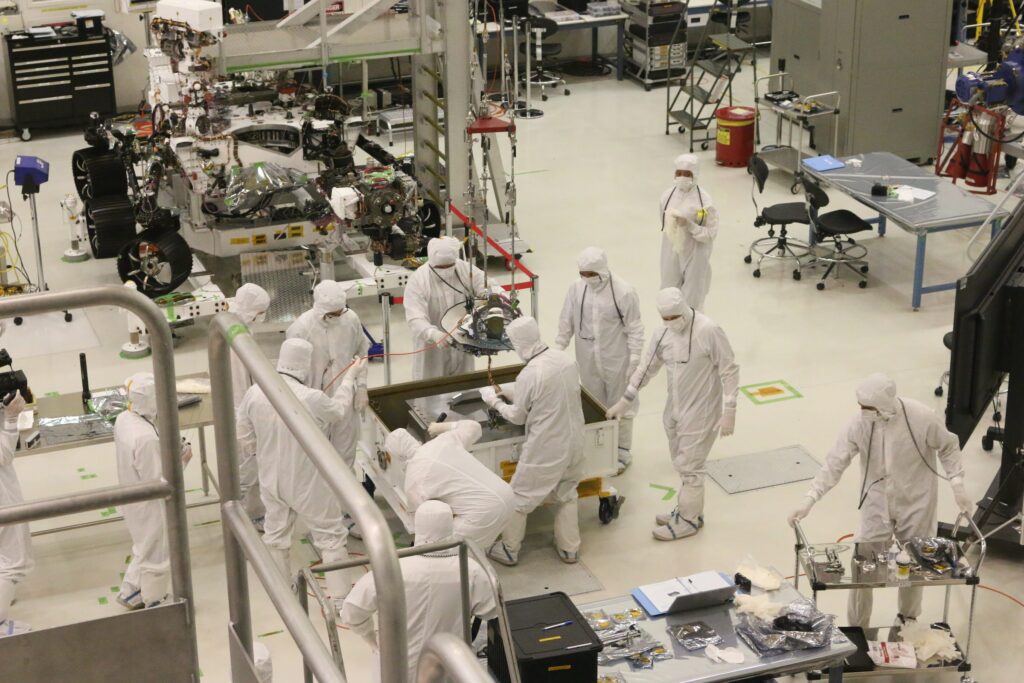Building home-grown STEM talent a focus in 2022 budget

Science and future students will be major winners under the new 2022 budget, as the government focuses on building Australia’s future STEM and manufacturing capabilities, however, support for research has fallen short.
Federal Minister for Industry and Science, Ed Husic, said the Albanese Government has a goal of rebuilding manufacturing capacity, in part by widening the pipeline of talent available to the science and technology sectors.
It has announced $5.8 million for the Women in STEM and Entrepreneurship program plus an independent review into Government programs to ensure they support greater diversity in Australia’s science and technology sectors. However, around $3.9 million over two years has been pulled from the Supporting Women’s Mid-Career Transition into the Tech Workforce segment of the March budget initiative called the Digital Economy Strategy.
There will be $4.8 million over four years to attract and retain Australia’s quantum tech talent, including support for 20 PhDs and to enable universities to kick-start national collaboration on quantum research and education.
The government is also aiming to put children on the path towards STEM early, with $10 million in funding slated for extending Questacon’s national science, technology, engineering, and mathematics (STEM) engagement activities through its Science Circus and Engineering is Elementary programs.
This was further supported by the government’s creation of 20,000 new university places focused on critical skills shortage areas, including engineering and technology, as well as 480,000 free TAFE places over the next four years.
Husic also outlined an additional $10.3 million for enhancing Australia’s science and research leadership in Asia Pacific, with the funds to support the Australian Academy of Science in housing the regional office for the International Science Council.
A future investment
Science and Technology Australia said putting students on an early path toward STEM careers was a smart investment in the nation’s research and manufacturing capabilities.
“In strapped budget times, science is the most important strategic investment a nation can make,” Science & Technology president Professor Mark Hutchinson said.
“The strong support for equity in STEM will create opportunities to tap into the full talent pool in this country.”
“We’re delighted to see further investment in inspiring the next generation of young Australians to see themselves in a future powered by science.”

More than $1 billion has been poured into building Australia’s space industry capabilities.
The Academy of Technological Sciences and Engineering (ATSE) also welcomed the injection of cash to encourage future students, especially women, to take up a STEM career.
ATSE president Professor Hugh Bradlow FTSE said: “The budget contains welcome steps to future-proof Australian science and technology skills and jobs, and leverage greater diversity of talent and perspectives, which is essential to address urgent challenges.”
“The Academy welcomes the funding for supporting women in STEM careers, including through the Women in STEM Entrepreneurship Grants (WISE), and looks forward to supporting the Government’s women in STEM program review.
“The additional $10 million for Questacon’s education and outreach work will also help make STEM more accessible to kids across the nation, particularly in regional and remote locations.”
However, he said more must be done to ensure Australia’s manufacturing sector remains globally competitive even as it decarbonises and works towards a zero-emissions future.
“While this is a step in the right direction, large-scale action is needed to deliver the tens of thousands of engineers that will be needed to fulfil the Government’s ambitious and necessary decarbonisation and manufacturing agendas,” Bradlow said.
Australian Academy of Science president, Professor John Shine, said the Academy noted the Budget’s focus on space, manufacturing, medical research and funding for the University Research Commercialisation Fund as positive steps.
“Research translation, commercialisation and acceleration will be crucial for keeping Australia safe,” Shine said, “but this budget falls short of the vision needed to put Australia on a strong footing in an uncertain future.
“It is disappointing that fundamental science capability is not recognised as the first essential step in the commercialisation effort, and there are no measures to boost basic research investment.
“Advanced industrial societies depend on a secure and active science sector to help deliver high-wage jobs and high-value industries to maintain the standard of living for their people and to propel economic growth. Australia is no different.”
@aumanufacturing Sections
Analysis and Commentary Awards Defence Manufacturing News Podcast Technology Videos






